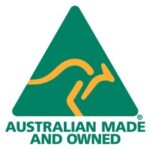
Triplet opals are fine slices of opal backed with a base, with an additional quartz cap on top of the slice, to emphasise the gem’s natural beauty. When creating our doublets and triplets, we only use gem-quality opals. Doublets and triplets are water-sensitive and should not be immersed.
Triplets consist of three layers:
A black backing as above A paper-thin slice of opal in the middle A clear glass, quartz, or plastic capping in the shape of a dome. The slice of opal in a triplet is usually extremely thin (paper-thin) so the clear capping serves to give the stone a nice cabochon on top. The clear capping may also magnify the colour of the opal slightly, and also serve to protect the opal.
Triplet opals are natural opals that have been stabilized to prevent cracking and improve durability. Triplets are also man-made. The majority of triplets are made from black potch, which is made from a mixture of ironstone and quartz. The top layer is clear non-opal material that has been fused to the black potch layer. However, the backing can be made of other materials such as black potch or brown ironstone.
Triplet opal is just as beautiful and valuable as doublet opal. The only difference is that the top of the stone is made from a synthetic material. Triplets contain less real opal than doublets. The top of the stone can be made from synthetic material. This is why triplets can be a lot more resistant to impact than solid or doublet opal stones. (Opal is a fragile gemstone.)
If a jeweler says that an opal is just opal, don't trust them. An opal triplet is an enhanced opal where the body tone has been darkened and the color magnified with a glass or quartz top. If the seller only calls it an opal, be careful because that does not necessarily mean it is genuine.
A triplet opal is a slice of opal with a dark background and a magnified piece of colour. Sellers who call it "just opal" are technically correct. HOWEVER, most reputable sellers will identify it as being enhanced.
To check if the opal is real, look at its side. If you see distinct layers, it's not a solid opal. The opal's thin slices are attached to the dark backing. If there are three layers, it's a triplet. A clear layer on top of the opal is also a sign of a triplet.
Opal doublets and triplets are made of layers that are glued together, so prolonged exposure to water may cause lifting between the layers. If water penetration occurs, the opal will take on a ‘foggy’ or grey appearance. You may even notice the appearance of condensation inside the stone. You should avoid getting an opal wet to avoid water penetration.
Please note: There is a lot of confusion between solid opals and doublets. Doublets and triplets need to be kept out of water, but solid opals are fine in water.
Cleaning – Clean your doublets and triplets with a soft cloth and mild detergent, but never soak or immerse them in water. Avoid bleach, chemicals, cleaners, and ultrasonic cleaners.





